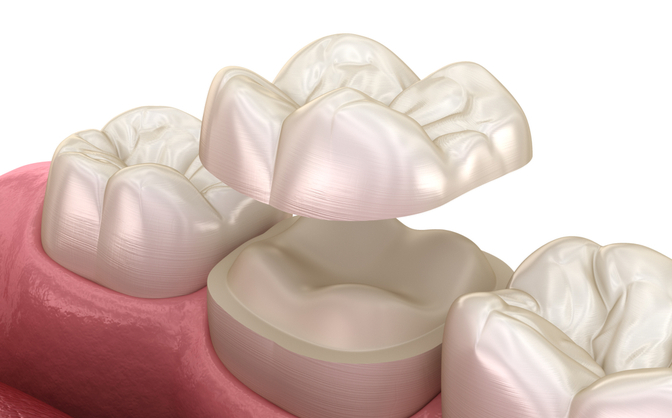A Guide to Restoring Damaged Teeth With Inlays and Onlays
- Home
- /
- Blog
- /
- Uncategorised
- /
- A Guide to Restoring Damaged Teeth With Inlays and Onlays

We’re all warned from a young age about the dangers of tooth decay. You probably already know that you should keep your teeth clean at all times, use fluoride toothpaste, and avoid sugary food and drinks. Unfortunately, tooth decay is common, and it can and will damage your teeth.
If we spot the signs of decay early enough, there are steps we can take to protect your teeth from further damage. The most commonly used technique is to apply a filling. But when more of the surface of your tooth has been damaged, we’ll need to use a larger restoration such as an inlay or an onlay.
But what exactly are inlays and onlays and how do they work? Let’s take a look at everything you need to know.
Inside everyone’s mouths, there’s saliva and bacteria. There are hundreds of species of bacteria in your mouth at any time, and millions of each exist in the smallest amount of saliva. Not all bacteria are bad; in fact, some are useful. But some are very bad.
One particular bacteria, streptococcus mutans, is particularly troublesome. This bacteria feeds on starch and sugar left in your mouth and, in doing so, creates acid that erodes the enamel of your teeth which causes cavities to form.
Inlays are commonly used to repair the teeth at the back of your mouth that are used for chewing. These teeth are known as your molars or premolars. The inlay is placed on the top of your tooth.
The difference between inlays and fillings is that fillings are applied directly to your teeth and harden once in place. Inlays fit perfectly into your tooth, are durable, and are long-lasting.
Inlays can repair cavities and cracks brought about through trauma.
An onlay is used to replace the cusp of your tooth if it has become damaged. This made-to-measure restoration will protect the tooth from further damage. Again, this type of durable and long-lasting restoration can repair damage caused by both trauma and decay.
Before placing inlays and onlays, we’ll need to take some impressions of your teeth so that our laboratory can create the perfect restoration.
Inlays and onlays are both custom-made to fit your tooth. They can be made of composite resin, metal, or porcelain. Resin and ceramic restorations can be milled within a day, meaning they can be placed straight away.
The procedure is relatively straightforward. We’ll start off by numbing and then cleaning the area we’ll be applying the restoration. Once prepared, we’ll bond the inlay or onlay to your tooth.
Inlays and onlays are durable and effective restorative treatments that can protect your teeth for many years.
Call us today to make an appointment to learn more about the procedure and find out whether it’s right for you.
Back to Blog